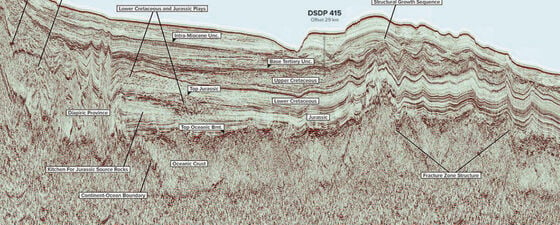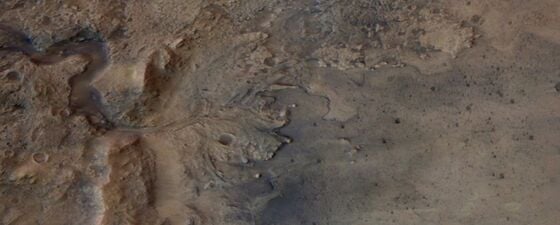It’s not just conjugate margins that can provide viable analogues. A comparison of the known hydrocarbon systems in the Perth Basin of Australia and the Morondava Basin of Madagascar provides a good example of the potential value of parallel margins as analogues.
In the recent fine GEO ExPro articles ‘Is a Conjugate Margin an Analogue?’ by Zanella, Doran, and Collard (Vol. 15, No. 4 and ‘An Exhumed Portuguese Oil Field’ by Davison and Barreto (Vol. 16, No. 3), the authors discussed the use of conjugate margins as viable analogues. In response, I would like to highlight the possibility that it is not just conjugate margins that can provide viable stratigraphic / structural / hydrocarbon systems analogues.
The principal mental driver for analogues on conjugate margins is McKenzie-style symmetric rifting, whereas assymetric, Mataschal-type rifting implies significant differences in syn-rift and post-rift tectonic evolution of the conjugate margins. Hence, analogue effectiveness across conjugate margins is likely to be ‘rare’ – precisely the conclusion reached by the above authors.
Geological Similarities of Madagascar and Western Australia
However, conjugate margins are not alone in providing potential analogues. This can be impressively illustrated by a comparison of the structural settings, stratigraphy, and known hydrocarbon systems of the Perth Basin, Western Australia, and the Karroo Corridor of the Morondava Basin, Madagascar (Figure 1). These provide an example of what can be termed ‘parallel margins’. By this I mean non-conjugate margins which, by virtue of their similar orientation, and structural and stratigraphic history, can have strong analogue value, despite having been widely distant at the time of their formation.
Figure 1: Comparison between the present day Karroo Corridor and Perth Basin.
Despite their present-day separation of about 6,000 km, and their pre-drift, intra-Gondwana separation of ~3,500 km (Figure 2), the Karroo Corridor of Madagascar and the Perth Basin of Western Australia show remarkable similarities:-
Both lie on the western margin of a (sub-) continent;
Both are failed Permian rift basins;
Both strike north-south and are more than 900 km in length and 50 – 100 km wide;
Both are bounded inboard by a faulted contact with crystalline basement;
Both are bounded outboard by a Jurassic rift system which culminated in oblique continental separation and sea-floor spreading, occurring in the Mid Jurassic for the Karroo Corridor and in the Late Jurassic-Valanginian for the Perth Basin;
Both are overlain by Cretaceous-Tertiary passive margin sequences that have now been widely eroded as a consequence of Neogene uplift;
Both basins have an Early-Late Permian glaciogenic and coal-bearing syn-rift sequence;
Both basins have an Early-Late Permian sandstone reservoir sequence;
There is proven oil charge in both basins from rich Early Triassic post-rift shale source rocks, with deltaC13 values of 30-33 ppt (Figure 3);
The Perth Basin has proven gas-condensate charge from Permian coals with deltaC13 values of 25-28 ppt; the same charge is probably present in the southern part of the Karroo Corridor (Figure 4).
Figure 2: End-Permian comparison of the Perth Basin and Karroo Corridor. Both lie at roughly the same palaeo-latitude and both lie at the end of a narrow seaward-opening gulf. The Karroo Corridor rifts trend roughly north-eastwards away from the orogenic southern. margin of Gondwana (Cape Fold Belt and equivalents), towards the free face of Palaeo-Tethys.
Figure 3: Perth and Karroo Corridor Basins: regional hydrocarbon system comparison (post-rift Lower Triassic shales).
Figure 4: Perth and Karroo Corridor Basins: regional hydrocarbon system comparison (syn-rift Permian coals and black shales).
The only significant difference between these two basins is that the Perth Basin is heavily gas-prone, holding over 2 Tcfg and about 40 MMbo in dominantly Permian reservoirs, whilst the (northern) Karroo Corridor is heavily oil and bitumen-prone with about 22 Bbo in place, albeit in Triassic sand reservoirs, although light oil has been recovered to surface from a Permian reservoir (Manandaza-1). Oil and gas shows occur quite widely from Permian reservoirs in the southern Karroo Corridor.
Remarkable Similarity
On the basis of the remarkable stratigraphic and structural similarity between these basins and their contrasting hydrocarbon systems, the two basins could have significant analogue value, one for the other. For example,
Is there an as-yet undiscovered heavy oil play in the Perth Basin?
Are there two discrete working Permo-Triassic hydrocarbon systems in the Karroo Corridor; i.e. an older (Permian) land-plant-dominated gas charge in the south, and a younger (Early Triassic) oil charge in the north?
Are there viable gas-condensate reservoirs within the Permian sequence of the Karroo Corridor, similar to the High Cliff and Dongara sandstones of the Perth Basin?
Could the geo-mechanical studies from the Perth Basin, relating stress orientation to risk of fault leakage (Anderson et al., 2012, AusGeo News 105) provide valuable insights for trap risking in the Karroo Corridor?
About the author…
Dr. Pete Jeans retired from Shell as Regional Geological Advisor after a 30-year career. He established PJ Exploration in 2004 and has been active as respected regional geological consultant and peer reviewer. He remains a keen geologist with near-worldwide experience and, where appropriate, a fund of potential analogues.





